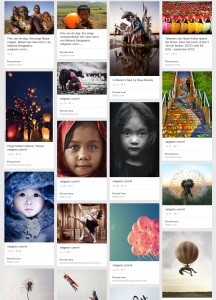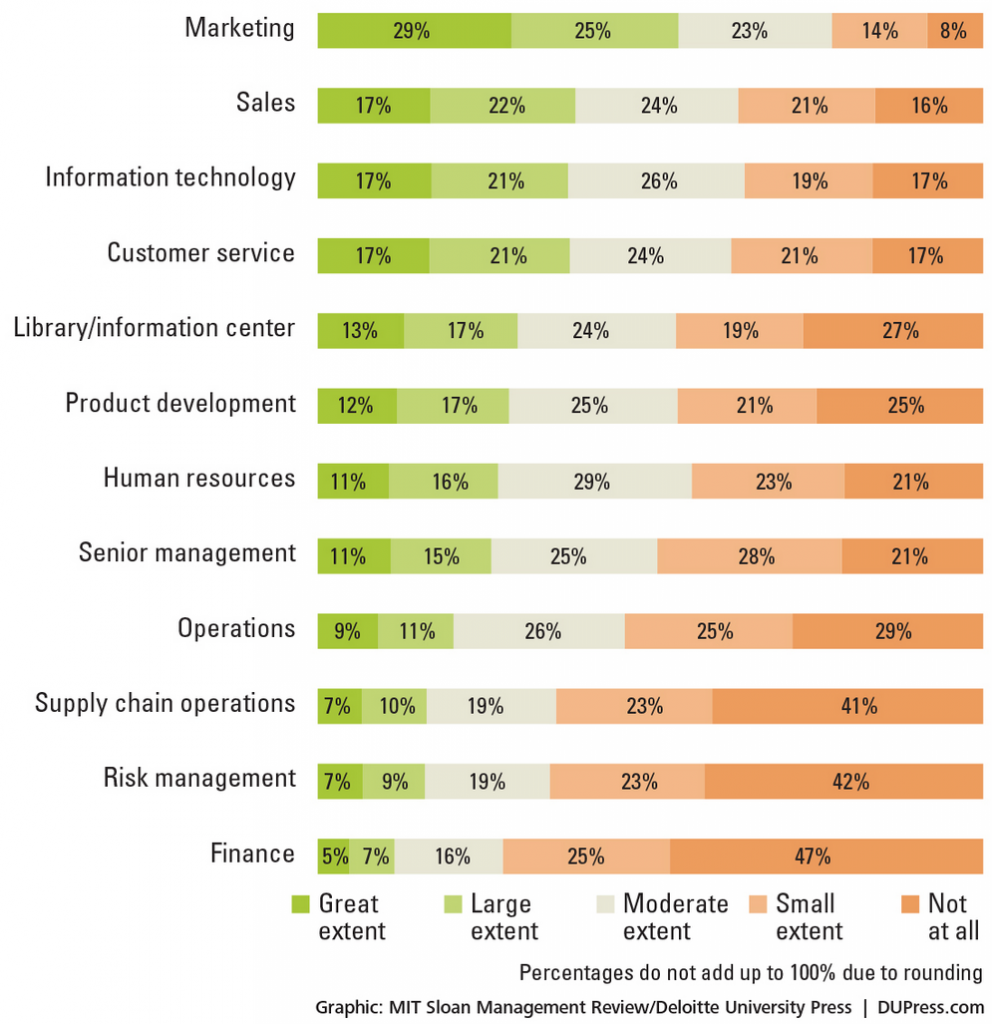Three months in to 2014 and we’re past making predictions of what the year in social media will look like. We’re living it. The ATTA is focusing on four major trends this month that will shape online life this year -- highlighting the ones that will be most relevant for the travel industry, from how to find travelers on social media and speak their language to how to organize your office to best engage socially with your customers.

Social listening is real-time monitoring of your audience (your audience is your customers, plus all the potential customers in your current customers’ networks). It’s listening in on the conversations going on around your brand, your products and your industry.
Travel companies often see the benefit of social listening in a crisis (think: airline delays or cancellations), but don’t know what they should be listening for on a regular basis. There are sophisticated tools to do this (Radian6 from SalesForce, for instance, that can automate customer service replies to social posts from around the web), but many companies aren’t ready for -- and don’t necessarily need -- such robustness. You can start with Google Alerts, a free service which lets you enter keywords or phrases that you want to monitor and sends you news and content from around the web when something is posted. Listen for news about your industry -- not just about yourself. When you listen to the whole web, you’ll know more than just what your Facebook or Twitter followers are saying.
Crimson Hexagon analyzed social listening around the term “ecotourism.” By analyzing over 30,000 tweets, blog posts and news articles, they were able to weed out 62 percent of the information that was news about the industry and focus on the remaining 38 percent, which was a lively conversation on the nature of socially or environmentally conscious trips by actual travelers who were planning one or had recently completed one. What do travelers mean when they talk about “ecotourism?”
“We found that 22% of ecotourism conversation on social media expressed a desire to experience the beauty of nature first hand, either actively through hiking, climbing, and other adventure sports (17%) or passively through meditation and yoga retreats (5%). Conversation around voluntourism (9%) was particularly lively.”
This kind of industry eavesdropping can yield very useful results for marketers of destinations or tour operations.
But your audience is only going to give you so much information for free. “If I tell you something, the only way I can be sure you heard it is if you respond,” says Josiah Mackenzie in a Tnooz article. Being part of social conversations is only the first step. Responding to reviews or comments left on social media sites is important, but to really show you’re listening, you can start taking all of that feedback and changing your messaging and your policies and procedures to show that you’re really in this business for your customers. Resolving issues as they arise on social media can also impact bookings from other customers who are watching how you respond.
According to ExactTarget’s 2014 State of Marketing report, 60 percent of marketers were actively engaged in social listening last year, but only 31 percent felt that their listening strategy was effective, so there is a disconnect between doing it and doing it well.
Here are some helpful key takeaways from a JD Power study that addresses being an engaged social listener without violating privacy or being creepy:
- Don’t just listen; understand first—are you hearing one, loud voice or a growing trend? Is positive sentiment due to great advertising or an awesome product? Understand the full picture before you respond.
- Consider the context of online updates and conversations—are consumers reaching out to you directly or venting to their friends? It’s their context (not yours) that matters. Your response should fulfill their expectations.
- Engage with the intention of delivering mutual value—consumers have shown they’re willing to give up some level of privacy in exchange for better service and incredible value.
- Demonstrate how listening builds relationships, rather than simply “intruding” on consumers’ conversations. People are still sensitive about privacy and listening for listening’s sake is simply creepy.
2. A Thousand Words: Why pictures (and video) are worth it
Pictures have always been said to be worth a thousand words, but there were specific (technological) reasons why this wasn’t initially the case in social media. We’ve recently passed the requirements threshold to have enough data and the right devices to share the millions of pixels that compelling online images are made of. Platforms like Pinterest and Instagram mean that the days of glossy travel brochures are back, but instead of direct mail, these images are going to directly onto the tiny screens we carry with us at all times.
One of Marketing Land’s “5 Social Media Trends to Kill in 2014” is “word-biased content”. Author Courtney Seiter says, “If ‘content’ still equals ‘words’ in your mind, it’s time to expand your definition.”
 It should come as no surprise that National Geographic wound up on top of Skift’s Travel Media Brands That Lead Social Media list in the image-sharing category. Their likes and follows on Facebook and Instagram are in the tens of thousands. But they don’t just deliver gorgeous content, they solicit it too through contests and sharing campaigns. Even images aren’t a one-way street in the world of social media.
It should come as no surprise that National Geographic wound up on top of Skift’s Travel Media Brands That Lead Social Media list in the image-sharing category. Their likes and follows on Facebook and Instagram are in the tens of thousands. But they don’t just deliver gorgeous content, they solicit it too through contests and sharing campaigns. Even images aren’t a one-way street in the world of social media.
And images aren’t just for image-centric platforms. “Visuals are attracting attention and driving engagement across all social networks. Even LinkedIn and Twitter are getting in on the action and showcasing images,” says Donna Moritz on Social Media Examiner.
It’s obvious that visual media is a powerful tool, but how can you get in the game? “This is all good and fine, but for marketers managing this content is a challenge,” says social media strategist and blogger Jeff Bullas. “ You need platforms, infrastructure and processes to manage your visual content collection and creation. Then you need to moderate and publish at scale.” And while Bullas doesn’t give specific advice on how to do this -- making it clear that each brand needs to plan according to its needs and size, he does clearly state the benefits of actively engaging in visual content marketing:
- Increased engagement
- Improvements to SEO
- Accelerated sharing on social networks
- Increased brand awareness
- Sales growth
3. It Takes a Village: Are you ready for team social?
“It’s out with the Social Media Manager, and in with the SEO Specialist, Social Media Strategist, Online Community Manager, Social Media Marketing Manager, Social Media Marketing Coordinator, and Blogger or Social Media Copywriter,” predicted Julia Borgini on the Daily Egg in January 2014. Don’t have enough staff to fill those positions? Then, everyone should be doing their part of the social media workload.
Hootesuite CEO Ryan Holmes says that last year growth of the position title “social media manager” slowed down 50 percent, but not because social media related tasks have declined. Actually, the role of the social media manager got so large in most organizations that it could no longer be contained in one person. It’s now every team member’s responsibility to bring social media skills to the table.
A Deloitte / MIT study shows that even financial departments are using social tools in their work in addition to the marketing team and pretty much everyone in-between.

A related trend is “employee advocacy” where you let your employees be themselves on social media and share their honest opinions about your brand in their own words to their own friends and followers. The line between work and life is probably at its blurriest on social media, so for some companies, trusting their employees to be social ambassadors is the easiest and cheapest way to fill all those social media positions.
If you really can’t muster your team to help out, there are automation tools for social media, that with the right manager, can be quite effective. Jeff Bullas says, “Automation used to be a dirty word on social but doing “social at scale” means that you have no choice. New emerging startups such as Sprinklr are helping brands do social and digital marketing efficiently. Traditional technology companies such as Adobe, IBM, Oracle and Salesforce are acquiring and integrating Enterprise class social media infrastructure into their product offerings. This trend is also seeing the maturing of previously free platforms such a Hootsuite to grow up and offer platforms that offer a solution and one portal for your social media marketing.”
4. You’re Gonna Have to Pay for That: Social advertising
Every major social media platform has a “pay to play” option -- whether it’s a promoted post, an amplified tweet or a sponsored link. Facebook has been at it for a few years, Twitter’s doing it, even LinkedIn and Pinterest have opportunities to pay. This is how social networks make their money, after all. Content can go viral for free and many marketing plans rely on social media for the ultimate ROI (when the “I” costs nothing), but even a small budget can go a long ways in social media advertising.
We know that practically everyone who purchases anything is active on social networks, but travelers aren’t everyone, so it helps to understand what tourism industry audiences are doing online. For starters, PhoCusWright studied U.S. outbound travelers and found that 90 percent of them are active on social networks. Nearly three-quarters of those polled said they logged in every day and over half used their social media time to look for deals (22 percent specifically related to travel deals). One more key figure: these travelers post more often from the road than when they got back home (31 percent vs. 27 percent).
So, those are the specific eyeballs you want seeing your content online, but do you really need to pay for it? Let’s start with the big ones: both Facebook and Twitter have the ability to target users with ads specific to brands whose websites they’ve visited. Because a user will only see an ad from you on social media if he or she has already been to your website, you know there is brand awareness and quality control guaranteed. Seems a little less risky, right? Twitter’s “tailored” tweets allow marketers to customize messages to users depending on where they are in the purchase cycle. Of course this all depends on how good your data is and how integrated your CRM might be with your social media accounts.
If you decide to pay for more eyes on a Facebook post, for instance, you don’t have to pay for everything you post on Facebook. Social Media Examiner has some good examples in a recent article about Facebook reach:
“First, make a distinction between casual content and business-worthy content. Photos from your latest speaking gig, videos of fun things you do at the office and quick news updates about your niche are all relevant and good, but should you pay to get more exposure for them? Nah. Those posts don’t impact your bottom line.But if you’re announcing a new product, new features, an ebook or webinar or other content you’ve spent hours on, isn’t it worth it to pay $30 or $50 to make sure your hard work is seen by 9,000 people instead of 1,000? Yes! Your time and specialized content are worth it. Why waste those efforts to save $30 or $50? That’s nonsense.
If you’re sharing the type of content you can track for short-term ROI (e.g., leads or revenue), isn’t it worth it to pay $100 or $150 to generate 300 or 400 hot qualified leads or 10 new subscribers with a lifetime value of $400? You bet! Actually, for this kind of content, I haven’t found a more affordable way to generate ROI with PPC, and I’ve tried a LOT of options.”
It’s easy to start small with social advertising. Do some small experiments and then see if they’re successful and scalable. You don’t have to go all-in. All good social marketing strategies are the perfect (and constantly adjusted) mix of paid and free campaigns. “The free ride is officially over,” says Courtney Seiter, “In 2014, it’s no longer enough for social media managers to create, optimize and analyze content. Now it’s on us to also be familiar with all the strategies — whether paid or organic or a combination of the two — that get the best results for each platform.”
What do you think? Are you noticing these trends in your daily business online? We want to know what’s working for tour operators and destination marketers. Feel free to leave your social media success stories, challenges or questions in the comments below.
